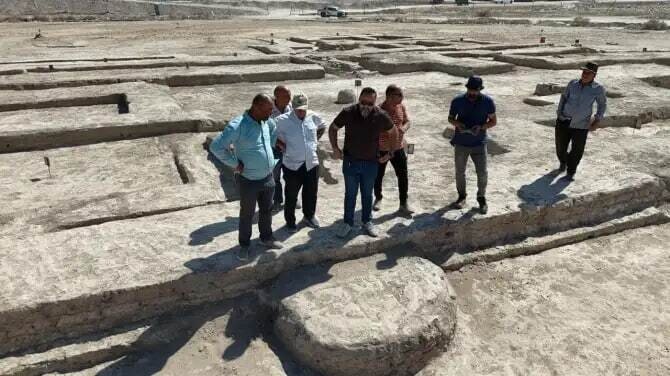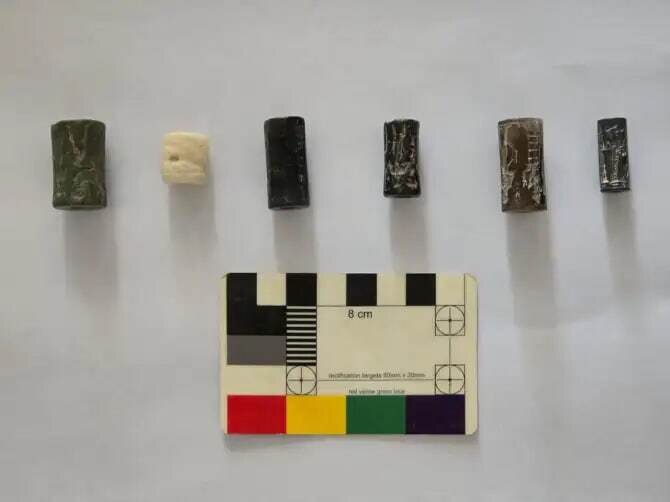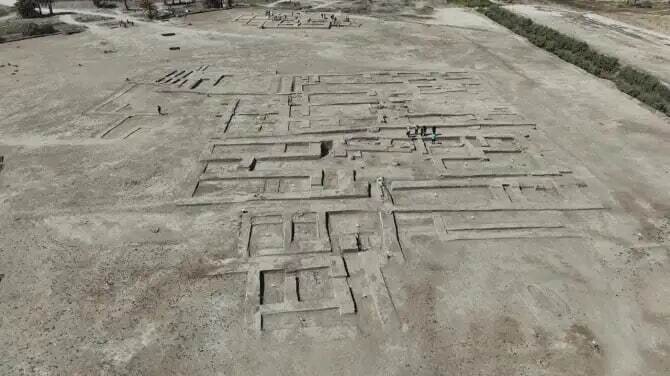Hundreds of artifacts from Sassanian and Babylonian eras unearthed in Iraq

TEHRAN - Archaeologists in Iraq have recently uncovered hundreds of ancient artifacts dating back to the eras of ancient Babylon and the Sassanian Empire.
Despite being over 3,000 years old, some of these items have remained remarkably well-preserved, CHTN reported on Saturday.
The objects include various pottery pieces, seals, and clay tablets inscribed with cuneiform script, which shed light on the development of some of humanity’s earliest civilizations. Cuneiform, one of the world’s oldest writing systems, was used for over three millennia but gradually faded from use, likely due to its syllabic structure that required extensive memorization of symbols rather than an alphabetic system.
Situated in Fayadia District, Babylon Governorate, the excavation site has been divided into two sections, labeled Area A and Area B. Area A, covering approximately 6,000 square meters, includes two distinct historical layers.

The upper layer, identified as Sassanian, has suffered damage due to both natural erosion and previous excavations. The Sassanian Empire, which ruled from the 3rd to the 7th century, encompassed areas of modern-day Iraq, Iran, Armenia, Egypt, and parts of Syria.
The lower layer, more protected from erosion and human interference, remains one of the best-preserved sections of the site. Meanwhile, Area B, spanning about 9,000 square meters, provides insights into urban life during the Old Babylonian period (circa 1894-1595 BC). Within this area, two residential units were also discovered.
The excavation, led by archaeologist Qahtan Abbas Hassan Aboud, uncovered 478 artifacts, including clay pots, cuneiform texts, and cylinder seals. The clay tablets often served as legal records, while the cylinder seals were used to imprint designs on clay as a form of signature.

According to Ancient Origins, the excavation is far from complete, with work continuing in both sectors to uncover additional layers of Babylon’s long history. The committee overseeing the project has emphasized the importance of sticking to scientific excavation methods. This includes thorough documentation of all findings, using photography, drawings, and proper recording of archaeological meetings. These methods ensure that the discoveries can be analyzed and shared with the broader academic community.
The committee has recommended full disclosure of all excavation activities to preserve the integrity of the site and its historical significance. By following established guidelines, the excavation team aims to protect the cultural heritage of Babylon while making important contributions to the field of archaeology.
This excavation is part of a broader effort by Iraq’s General Body for Antiquities and Heritage to explore and preserve the rich archaeological heritage of ancient Mesopotamia, home to some of the world’s earliest civilizations.
AM
